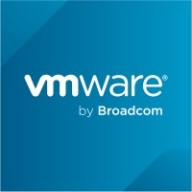

Densify and VMware Aria Automation are direct competitors in cloud management and optimization. While VMware Aria Automation is recognized for its advanced automation capabilities, cost-sensitive customers often prefer Densify due to its favorable pricing and support, impacting the perceived value of each product differently.
Features: Densify is known for precise cloud cost management, offering actionable insights that help optimize resources and achieve cost savings. Additionally, it provides extensive cloud account aggregation and visualization, aiding in comprehensive capacity planning. VMware Aria Automation offers robust automation features, supporting complex workflows and integrations. The platform enables automated deployments, detailed blueprints, and integration with a variety of third-party tools, emphasizing its strength in handling sophisticated environments.
Room for Improvement: Densify could enhance its feature set by offering more extensive automation capabilities and deeper integrations with other cloud services. Its analytics dashboard, while functional, may benefit from more intuitive navigation and customization options. VMware Aria Automation, on the other hand, could reduce the complexity of its initial setup and streamline its user interface. Simplified deployment processes and better documentation could make its features more accessible to a wider range of users.
Ease of Deployment and Customer Service: Densify is often favored for its quick deployment times and responsive customer support, which users appreciate for its efficient service. In contrast, VMware Aria Automation may require prolonged setup due to its comprehensive feature set. However, it excels in supporting complex enterprise environments, making it suitable for larger organizations despite potential deployment delays.
Pricing and ROI: Densify generally offers lower initial setup costs with a faster return on investment, particularly valuable for those focusing on direct cost savings. Its emphasis on targeted resource optimization allows for quicker financial returns. VMware Aria Automation, although presenting a higher entry cost, offers substantial long-term benefits through its deeper integration and automation features, which can lead to greater operational efficiency and ROI in complex setups.
| Product | Market Share (%) |
|---|---|
| VMware Aria Automation | 9.4% |
| Densify | 0.9% |
| Other | 89.7% |


| Company Size | Count |
|---|---|
| Small Business | 1 |
| Midsize Enterprise | 1 |
| Large Enterprise | 9 |
| Company Size | Count |
|---|---|
| Small Business | 32 |
| Midsize Enterprise | 24 |
| Large Enterprise | 130 |
Densify is a hybrid cloud and container resource management platform that makes workloads self-aware of their precise resource requirements and automates the resource management and selection process. This solution helps you control your cloud spend and also helps your apps perform and scale better. Densify enables you to match your cloud requirements with the optimal cloud supply. Additionally, Densify is the only technology that leverages patented, predictive machine learning-powered analytics to perform advanced modeling of workload patterns, and provide precise optimization directives. It is ideal for cloud engineers, container platform owners, and IT finance.
Densify works by:
Densify Features
Densify has many valuable key features. Some of the most useful ones include:
Densify Benefits
There are many benefits to implementing Densify. Some of the biggest advantages the solution offers include:
VMware Aria Automation is a cloud management tool that allows companies to simplify their cloud experience through a modern automation platform. The solution is designed to deliver self-service clouds, multi-cloud automation with governance, and DevOps-based security and infrastructure management. It helps organizations improve IT agility, efficiency, and productivity through its various features.
VMware Aria Automation has multiple use cases that include the following:
VMware Aria Automation Features
VMware Aria Automation has various features that allow users to easily perform operations. Some of the solution's capacities include:
VMware Aria Automation Benefits
VMware Aria Automation offers its users various benefits. Some of the biggest advantages that the solution brings to companies that utilize it include:
Reviews from Real Users
Awais J., CTO/CEO at a tech services company, likes VMware Aria Automation because it saves a lot of time, provides more visibility, and has extensive automation capabilities.
An IT consultant at a government rates VMware Aria Automation highly because the product gives you flexibility to analyze and consume resources.
We monitor all Cloud Management reviews to prevent fraudulent reviews and keep review quality high. We do not post reviews by company employees or direct competitors. We validate each review for authenticity via cross-reference with LinkedIn, and personal follow-up with the reviewer when necessary.